Lady Urbosa.
You can play as Lady Urbosa.
That’s it. That’s the review.
We could end the discussion about Hyrule Warriors: Age of Calamity right here and you’d have a pretty good understanding of the game. It has Lady Urbosa and you can play as her. She was my favourite character in 2017’s The Legend of Zelda: Breath of the Wild and she represents the one thing I love about its musou-style (hack-and-slash) prequel Age of Calamity. Rather than adventure through Age of Calamity locked in as the silent, inscrutable Link, I can venture through the story as one of Breath of the Wild’s more endearing and interesting characters. Age of Calamity’s greatest strength is its characters, especially the ill-fated Champions introduced in Breath of the Wild: Revali, Daruk, Mipha, and the HGIC herself (Head Gerudo In Charge) Lady Urbosa. Armed with their own unique fighting styles, weapons, and abilities, each Champion feels powerful and fun to play.
However, Age of Calamity’s biggest weakness is that the game’s story does not play to that strength. Breath of the Wild showed us Zelda, Link, and the Champion during the time of the Calamity some 100 years before the rest of that game. Those moments were told through cutscenes. With Hyrule Warriors, I expected a story that delved deeper into those relationships. I wanted to see the Calamity from their perspective, hear their thoughts and feelings in their own words.
Instead I got a game full of meaningless missions designed for farming materials and grinding levels with a world map so bloated with “quests” — really little more than glorified grocery lists of items to assemble — that I dreaded the end of each mission, because I knew it’d only unlock more.
Hyrule Warriors: Age of Calamity shares many similarities with its musou ancestor, 2014’s Hyrule Warriors. As in Hyrule Warriors, AoC (insert joke about the Congresswoman here) offers a wide cast of characters with different power levels and unique movesets. Combat is once again the kind of hack-and-slash action that involves fighting dozens of enemies at a time across chaotic battlefields. This is the blueprint of a standard musou game, as pioneered by Koei Tecmo’s developers in the Dynasty Warriors series. They’re the designers behind these Zelda spin-offs, too.
As in any musou game, you spend most of the game mowing your way through hordes of enemies with various weapons. You execute combos with heavy and light attacks, breaking through a tougher enemy’s weak-point gauge. With the right character, fighting feels awesome — a complex dance of watching gauges fill or deplete and executing the right combos or deploying the right Sheikah powers at the right time for maximum damage. Deplete the gauge to unleash a powerful weak-point attack. Successful attacks build up your Special metre, unleashing a devastating blow that changes depending on the weapon you’re using, enemy type, and other factors. The game also rewards perfect dodges with the ability to respond with a flurry of attacks, but I found the timing window for this move to be frustratingly inconsistent.
The biggest difference with this Hyrule Warriors is its use of elements from Breath of the Wild. You can use that game’s high-tech Sheikah Slate to augment your fighting style. The cryonis rune drops blocks of ice on the battlefield that act as walls to stop a charging enemy. Stasis freezes enemies in place and sends them flying after you finish striking. Magnesis tears metal weapons out of an enemy’s hand or snatches a thrown weapon out of the air. Bombs…are bombs. They go boom. You can time Sheikah moves to counter and stun enemies. Maybe an enemy is rushing you. Trigger Cryonis to put a block of ice in his way. Let ‘em smack into it, then attack.
What I appreciate most about Age of Calamity’s combat is its dedication to making each character stand apart. Everyone can wield the Sheikah Slate but each character does so in their own unique way. Zelda’s remote bombs summon a giant, controllable Guardian to the battlefield, flinging bombs everywhere. Mipha’s bombs pour from the sky, evoking the rainfall from her home in Zora’s Domain. And Link? True to his blank-slate, silent protagonist, less-personality-than-moldy-bread character, he just chucks ‘em.
Age of Calamity splits its story into chapters and allows you, for the most part, to use any character you’ve unlocked to complete story missions. You start, of course, with Link, unlocking Zelda, Impa, and the four Champions by the end of the second chapter.
Beyond those Slate differences, each character has their own unique weapon and abilities. The bird-like Revali can fight on the ground or in the air. The aquatic Mipha creates whirlwinds of water that damage enemies while healing allies. Rocky Goron hero Daruk summons clumps of hardened magma that he detonates. Lady Urbosa calls forth bolts of lightning to fry her enemies with every strike of her scimitar.
Zelda and Impa stand out as the weakest and strongest of the early characters (there are, of course, more heroes to encounter, but you’ll have to discover them for yourself). The no-nonsense rapier-wielding Zelda from Hyrule Warriors is gone, nerfed into a total mess of a character who’s nigh-unplayable. Nu-Zelda uses a special Sheikah Slate to fight. Her rune-focused combat style is completely unusable against boss mobs like Lynels and Hinoxes; her attacks are too slow, her hits feel incredibly underpowered, and I don’t feel like I’m making progress. I dread any battle that features Zelda as an obligatory ally, and when she’s not, she gets switched out immediately — usually for Impa.
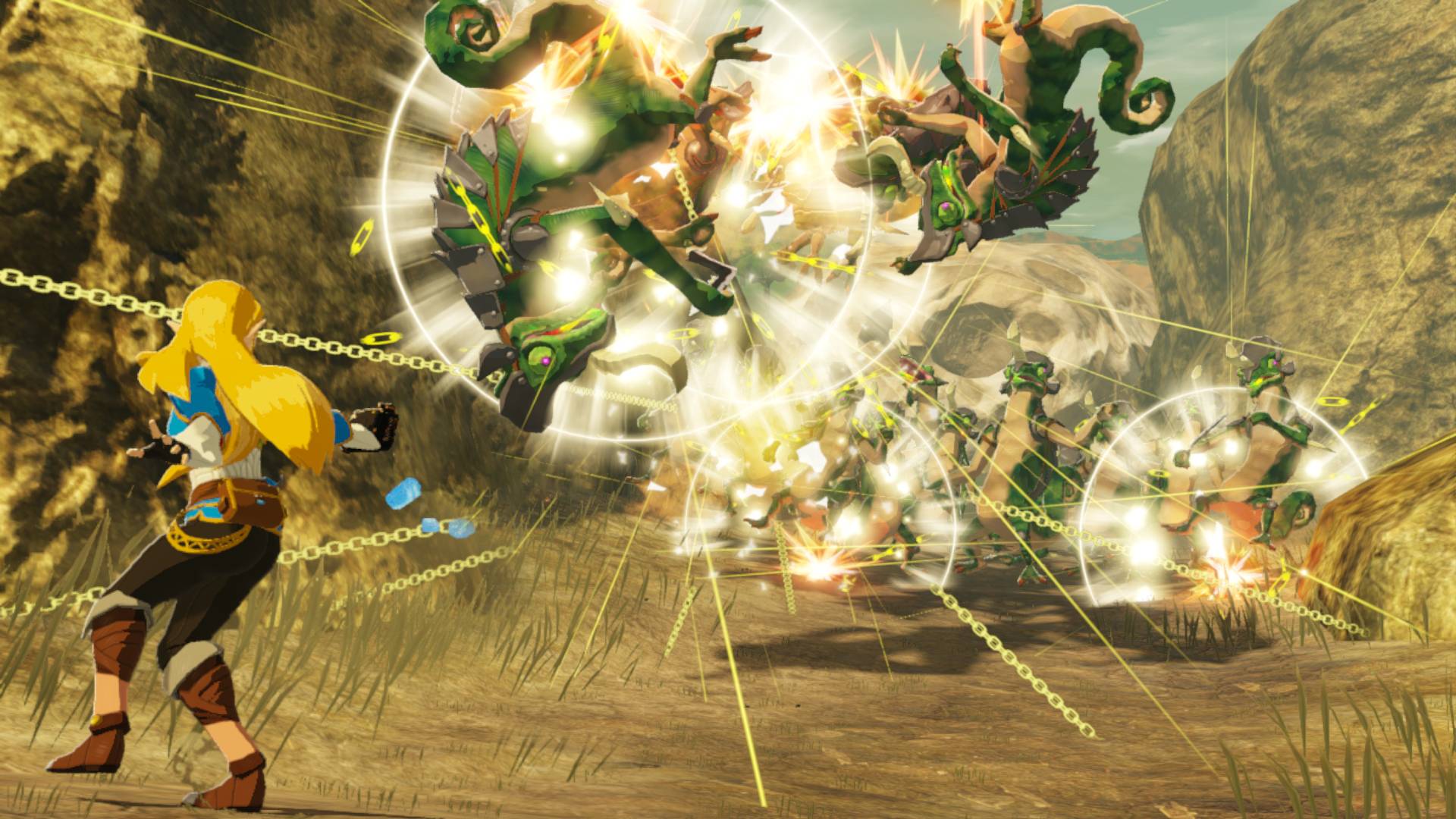
If Zelda feels weak, Impa feels overpowered as hell. As I mentioned earlier, I like playing Lady Urbosa whenever I can because I simply enjoy her character, but if there’s a battle where I have to fight powerful enemies or beat a time limit, Impa is my go-to to get shit done.
Impa’s unique ability imbues her enemies with a seal that she absorbs creating copies of herself à la Naruto and his kage bunshin no jutsu. The result is a battlefield full of Impa clones that absolutely destroy everything in their path. Health bars and weak-point gauges melt away like cotton candy in rain. When fighting with a full party of Impas, her special gauge fully charges almost as soon as it depletes, allowing you to chain specials one after the other to make short work of the game’s most powerful enemies.
Impa was my favourite character in Hyrule Warriors. I was initially dismayed to see her new design in Age of Calamity, concerned that she had lost the serious, badass edge in order to be Zelda’s tag-along. Though her tone and personality is indeed wildly different, she is as fun to play in Age of Calamity as she was in Hyrule Warriors.
Fans of previous Hyrule Warriors games will lament the loss of the Adventure mode, which had you fight different types of themed battles to unlock new weapons and characters while uncovering tiles on a map that looked just like the overworld map in the original Legend of Zelda. Replacing it in Age of Calamity is the quest/challenge system.
Challenges are special battles you can fight that have different requirements. For example one challenge has you fight with a restrictive time limit encouraging you to pick your fastest, most powerful characters, while another challenge automatically fails if you take a single hit. These reward you with items that you then use to complete quests. Certain items or materials can also be purchased from shops or won by defeating monsters. Quest rewards include increased combos or life-hearts for certain characters, recipes for meals that confer some temporary in-combat advantage, a new shop, or some other boon.
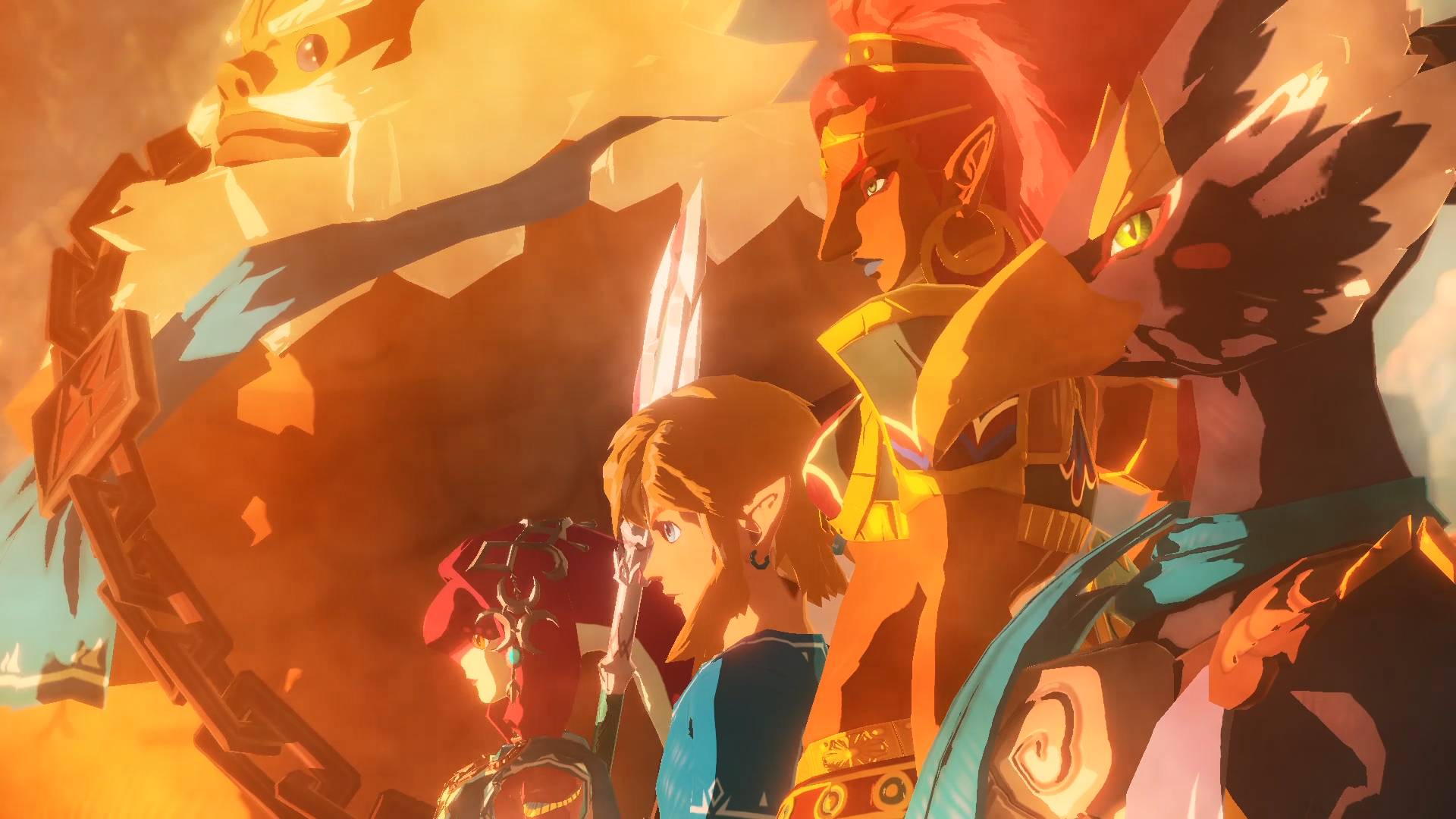
Quests and challenges feed into a progression system The world map is divided into the different regions of Hyrule (Lanayru, Hebra, Gerudo, etc) with each region assigned a percentage. Each quest you do in a certain area ticks up the percentage and at certain percentage points you’re rewarded with a fat cache of materials used to — you guessed it — complete more quests.
Y’all, I hate quests.
There are too damn many of them, all of them tedious. When you’re not progressing the story, you’re staring at the 50 million icons on the world map, paralysed with the choice of which quest to do next. I’d love to show you exactly what I mean but unfortunately Nintendo’s embargo prevents me from showing a picture of how ugly and egregious this system is. Trust me when I say that looking at the full map zoomed-out is enough to induce eye strain. It’s considerably worse than even the icon-cluttered maps of open-world Ubisoft games, and that’s saying something.
When you finish a story mission, the map lights up with new quests and challenges that ding as each one gets added. I hate that aspect the most. You’re held hostage, unable to jump into the next activity, forced to watch each new quest appear with its little ding, often in handfuls of 10 or more at such a slow pace it feels like torture. I literally groaned watching new icons light up across the screen, often stacked damn near on top of each other.
The quest/challenge system becomes a recursive loop of awful that significantly pads the game’s runtime. In order to complete the quests, you have to complete challenges. Often you are not rewarded with enough of the specific item you need, so you have to run the challenge again. I completed the main story in nine hours but I’ve clocked a total of 36 hours — and that’s with only an average 25% completion in each of the seven regions. If you’re looking for a timesink, AoC has you covered.
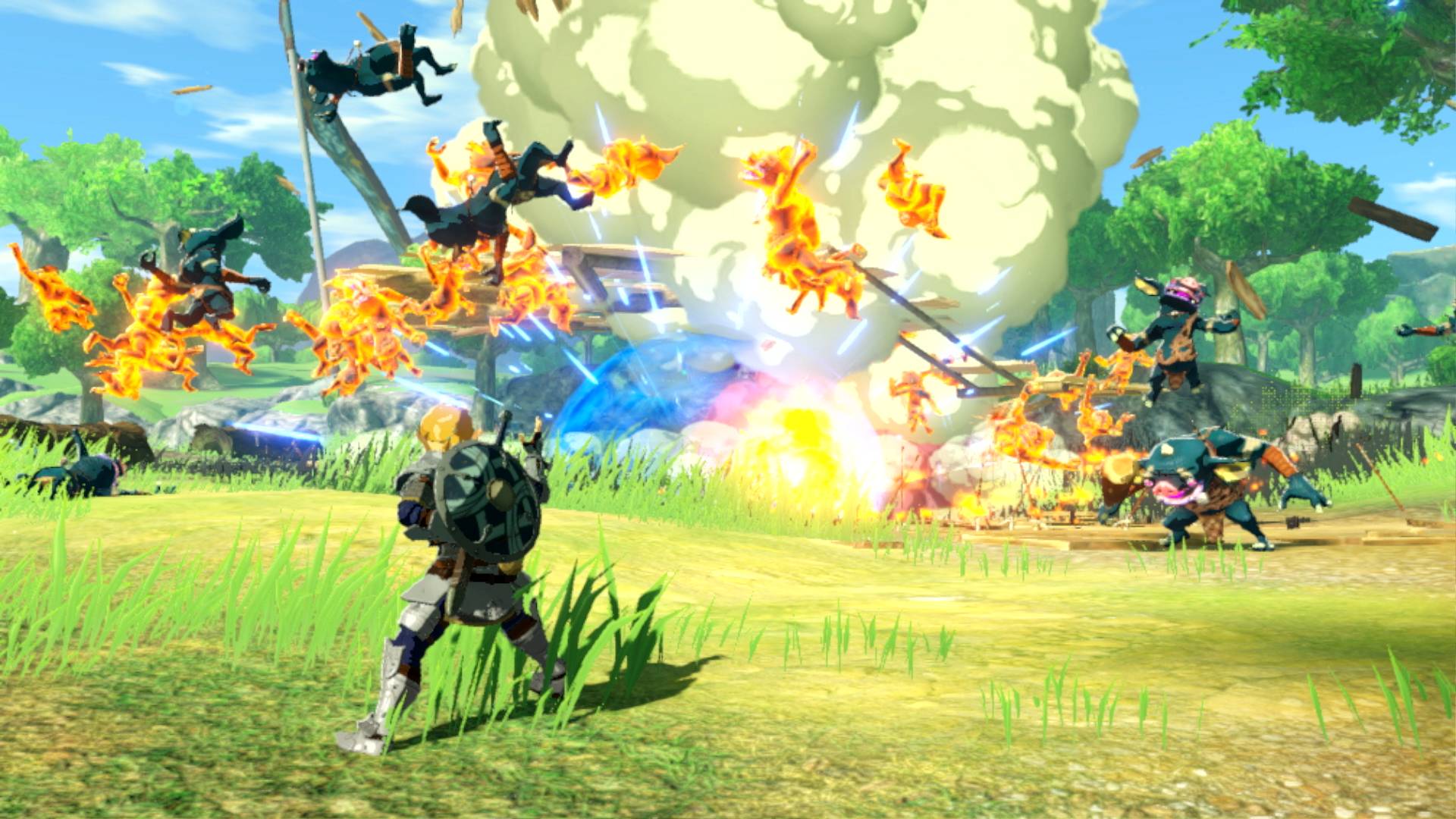
I’d hate this system much less if completion rate was only tied to completing challenges, as it was in Hyrule Warriors’ Adventure mode. Challenges serve a purpose: You can grind levels or test out new combos or unlocked characters. They also drip-feed you tiny bits of story. But quests feel like they add nothing substantial to the game. Yes, you’ll earn ostensibly useful things, but there are so many, and so few that stand out, that they start to feel like little more than an endless series of boxes to tick as you chase the next dopamine hit that’ll come from watching completion percentages increase.
The incredible quest bloat actually impeded my enjoyment of AoC as a musou game. This is one case where less would have been more.
Despite my disdain for the system that gives structure to most of the game, AoC doesn’t lack for charm. It’s just that the game’s more charming moments are buried in the tiniest details, and easily missed. Characters use paragliders to jump off the Sheikah tower when it’s time to go on to the next story mission. If Link is wearing a certain piece of headgear (which I won’t spoil), his paraglider turns into a cucco. There are Koroks to find hidden on the battlefield, often requiring you to explore where there are no enemies or outposts. There are even buried treasure chests to pluck out of the ground, BotW-style.
Piloting the Divine Beasts was the one moment that made me sit up and go “Cool!”. In Breath of the Wild, the Beasts are little more than puzzle dungeons meant to test your skills wielding the Sheikah Slate. In Age of Calamity you experience them according to their purpose: to blow up a lot of shit. The Divine Beasts, present as a part of a larger story mission or in their own specific challenges, work like a vehicle mini-game. If you’re familiar with World of Warcraft, piloting a Divine Beast feels a lot like the MMO’s bombing missions — except the controls are much, much worse.
There is an option to aim with motion controls. Turn that off immediately, it’s bad and fighting with it lead me to a lot of failed missions. Hell, even aiming manually led me to a lot of failed missions because for some reason the camera remains super-sensitive. (The camera is bad even outside of the Divine Beast segments. It frequently zooms into walls and at such angles that your character disappears, making it impossible to see what you’re hitting and where attacks are coming from.) Trying to aim your weapons at bases is nigh impossible when your view’s flying all over the place. I had to restart a mission more than once because I couldn’t aim well enough to shoot enough enemies within the time limit.
Divine Beasts are extremely difficult to move, as I guess an ancient massive weapon of mass destruction should be, and though they are different on paper, they each control much the same, with the same weapon types. They all have a primary-fire canon, a wider area-type attack, some kind of defensive shield, and a special that’s just a big laser.
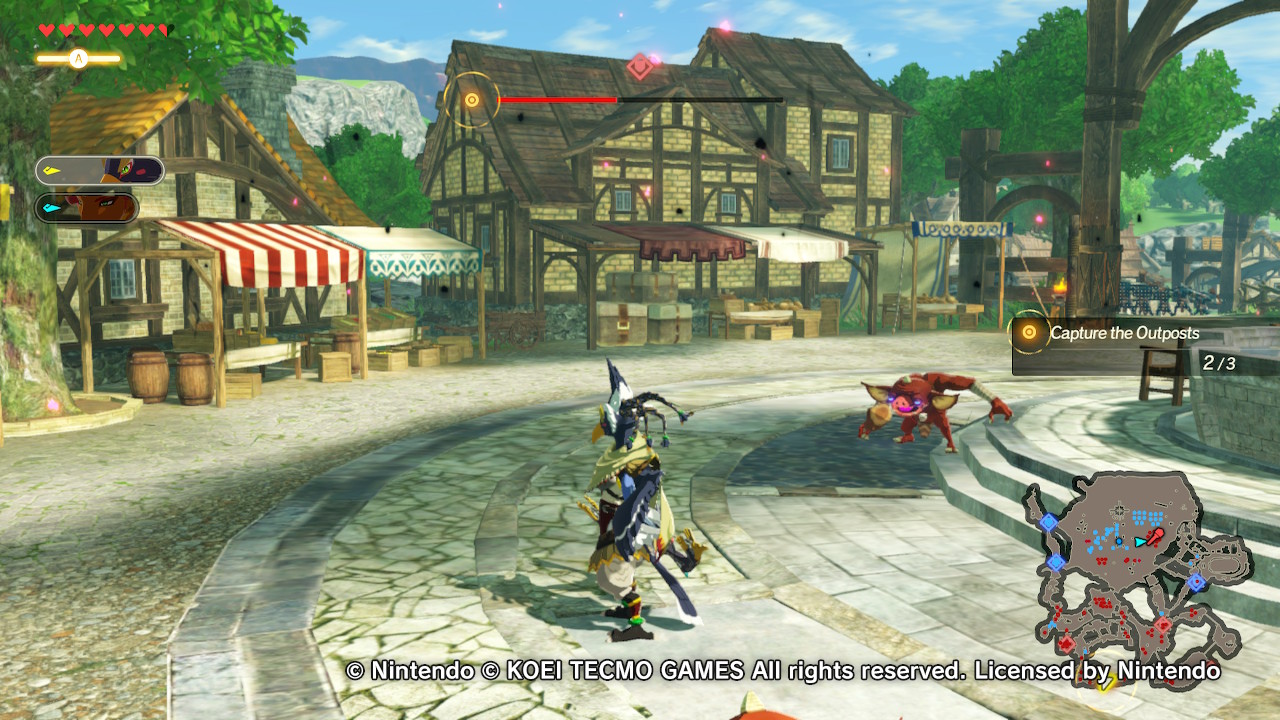
Vah Medoh, the flying Divine Beast, has the worst controls. Vah Ruta (water) and Vah Rudania (fire) are in the middle, and it should come to no surprise that my favourite Divine Beast is the one Lady Urbosa pilots, Vah Naboris (lightning). Thankfully, it has the most responsive controls by far.
The promise of Hyrule Warriors: Age of Calamity is stated right there in its name. It appeals to Zelda lore enthusiasts, like me, who wish to see the story of the Calamity as it happens. It’s designed to attract Breath of the Wild players who were enamoured with the champions of the past, whose voices we only heard in unsatisfyingly small doses as spirits or flashbacks.
It pains me to say that Age of Calamity fails to live up to this promise. Story missions progress the plot but offer little new information that Breath of the Wild didn’t already cover — particularly in the Champions’ Ballad DLC. We recruit the champions to pilot the Divine Beasts. That’s about it. Beyond procedurally telling the story of the Calamity battle by battle, the story simply recounts Zelda’s quest to overcome her insecurity and develop her sealing powers — a tale we already heard in Breath of the Wild.
In Breath of the Wild, the champions think highly of Link and Zelda afford them deep love and respect that persists in death. I was hoping Age of Calamity would show me how they earned that love and respect, but it seems to just appear fully formed and unearned. Everyone loves and wants to protect Zelda the minute they meet her because she’s the macguffin princess with an as-yet-unmanifested power to save the day. (Urbosa, of course, with her love affa — I mean, history with Zelda’s mother is the exception.)
Link, on the other hand, is just there and everybody’s cool with it. Like “sure, weird boy who speaks in only grunts, you can come along too.” (This goes doubly for Mipha, who apparently has loved him forever for no reason the game ever shows. Mipha, queen, you can do better.)
[review heading=”Hyrule Warriors: Age of Calamity” image=”https://www.kotaku.com.au/wp-content/uploads/sites/3/2020/11/19/ns0zgwojxiusrmne7rim.jpg” label1=”BACK OF THE BOX QUOTE” description1=”Remember everything you liked about Breath of the Wild and Hyrule Warriors? This is none of that.” label2=”TYPE OF GAME” description2=”Hack-and-Slash/Musou” label3=”LIKED” description3=”Lady Urbosa” label4=”DISLIKED” description4=”Bloated side-quests, DING DING DING!” label5=”DEVELOPER” description5=”Koei Tecmo” label6=”PLATFORMS” description6=”Nintendo Switch” label7=”RELEASE DATE” description7=”November 20, 2020″ label8=”PLAYED” description8=”9 hours to complete the story, 36 hours total” ]
I enjoy musou games. To me, they’re like a summer popcorn action movie distilled into video game form — flashy as hell with thin plots designed to only let you watch shit explode or, in this case, beat the shit out of mobs of enemies while your kill counter reaches ludicrously high numbers. Hyrule Warriors: Age of Calamity fulfils that purpose of a musou; were it not for the egregiously bloated quest system, I’d even call the game adequate. Characters offer fun and different ways to fight, and combat capably marries the hack-and-slash style of a musou with the magic, dodging, and Sheikah Slate gameplay of Breath of the Wild.
Battles do get tedious toward the end, and one in particular changed my feelings about the game from mild disappointment to active depression…but embargoes prevent me from saying when and why. Still, musou fans absolutely dying — let me be clear, you should be on the verge of literal death from a disease for which the only cure is playing a new musou game — for another fix can fill their time with this while they continue their vigil for a North American release of Persona 5 Scramble: The Phantom Strikers.
But part of the appeal of Hyrule Warriors: Age of Calamity was that it could be more than an action-heavy, plot-thin musou game. Maybe it’s strange to expect significant plot to happen in a spin-off rather than a direct sequel but hell, Kingdom Hearts did it for decades. Besides, the story of the Calamity wouldn’t necessarily advance the story of Breath of the Wild, just fill in gaps in our understanding of characters and relationships.
Fans primarily looking for a meaningful addition to Breath of the Wild’s canon can skip this game. It wastes the opportunity to establish the deep connections present in Breath of the Wild, instead serving only as a vehicle for beating up bokoblins as your Breath of the Wild fave. In the absence of other payoffs — for example, I’d forgive every sin named here if, as is typical for the Dynasty Warriors franchise, each character got their own story mode — not even my ardent love for these characters was enough to sustain my interest over the entire, artificially padded game. Again, you can play as Lady Urbosa. That’s it. That’s the game.
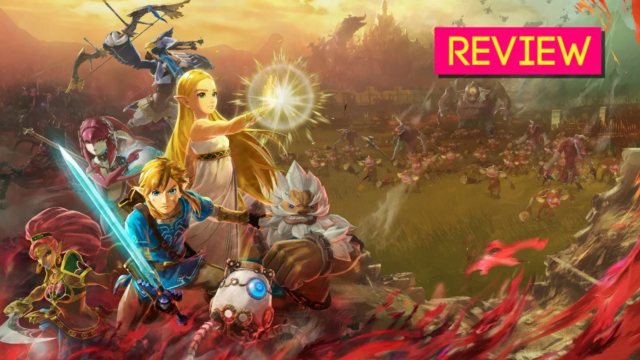
Leave a Reply